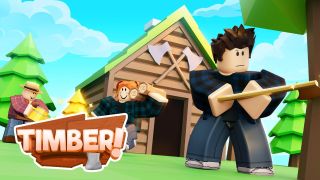Roblox is a popular multiplayer game that many children have been playing outside of school time, nights, and weekends. It features interactive technology that allows students to build and play in worlds they have created.
The collaborative aspect of Roblox can allow students to connect with others virtually, while co-creating worlds. As educators, we know that when students are interested in a topic, they are more engaged, and thus, learn more. We also know that when we develop learning activities in exciting ways beyond traditional lectures and worksheets, students are able to experience content in multiple ways.
One way to bring these types of experiential learning experiences and project-based learning to the traditional classroom is by embracing Roblox and creating a Roblox classroom. A Roblox classroom can have a wide range of features while specifically providing students opportunities to code, create, and collaborate!
To get started, set up a free Roblox account for your Roblox classroom, and take the Roblox educator onboarding course within the Roblox website.
Creating a Roblox Classroom: Coding
One of the special features of Roblox is the ability for students to code as they build their virtual worlds. In your Roblox classroom, developing coding skills and having opportunities to practice coding can be an integral part.
If you are new to coding or coding in Roblox, CodaKid offers several courses geared toward students 8 and over to create games in the Roblox Studio by using the Lua coding language. If your students are native Spanish speakers, Genius offers Roblox Studio courses for Spanish language learners.
Roblox also has a host of other external opportunities for code development focused on coding language within the Roblox Studio. In addition, The Roblox Education web pages also have different templates and lessons that teachers can work from to support students' development of the Roblox classrooms. The lessons are aligned to curriculum standards and range in levels and subject areas.
Creation
There are many options to create virtual worlds, simulations, and 3D options within Roblox. To keep your Roblox classroom connected to teaching and learning, it may be helpful to structure and organize the outcomes of what you expect students to focus on when creating.
A good starter is a lesson offered by Roblox is an Intro to Coding and Game Design. This lesson is also connected to the Innovative Design and Creative Communicator ISTE standards.
Other creation options that Roblox already offers is Code a Story Game, which would connect with English language arts, Animate in Roblox, which connects with engineering and computer science, and Galactic Speedway, which connects with science and mathematics.
These are only a few examples of premade games and templates that you can use to start the creation process. As your students within your Roblox classroom develop their skills and expertise in design thinking, animation, coding, 3D modeling, etc., you can work with them to create different worlds to address other skills and content areas.
Collaboration
Social presence, community, and collaboration can all be seamlessly achieved within Roblox classrooms. To leverage the collective contributions of students, create different opportunities in which students will need to use the multiplayer feature to problem-solve within the virtual world. To get you started, Roblox has Escape Room and Build A for Treasure experiences that require students to work collectively.
Do not worry about others outside of your class or school joining your Roblox classroom. Roblox has several privacy features available to include activating private services for classroom use in which only invited students will have access.
Trust us, students love Roblox, and if you embrace all that it has to offer and integrate it in into your teaching, you will not only be one of the favorite teachers in the school, but you will also support students development of their coding, creativity, and collaboration skills, all of which are part of the 4 Cs and essential soft skills that all learners must be equipped with to have success beyond their classroom education.

